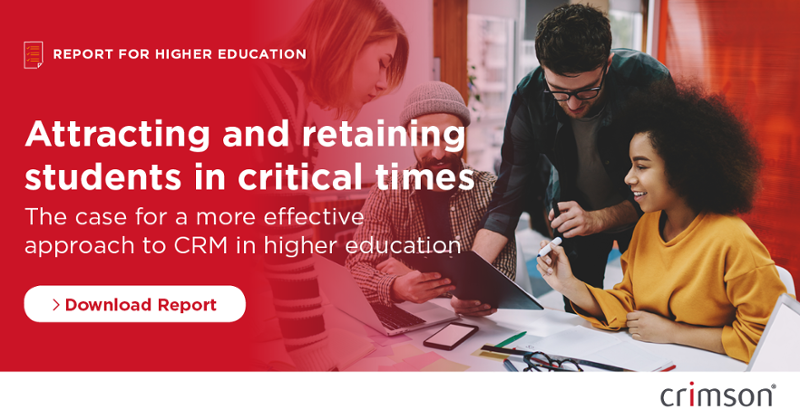Univertisty diversity: why higher education institutions are missing a trick with the diversity dilemma
Diversity within the world of education is a hot topic right now and will most probably continue to be for the foreseeable future.
Higher education establishments, particularly universities, are coming under increasing pressure to focus more of their energy on improving their diversity levels. The overall aim – to give students from all backgrounds (whether that’s mature students, undergrads, post grads, millennials or students with diverse ethnic origins) a fair chance at achieving their educational aspirations.
But while establishments, such as the University of Oxford may be upping their diversity game with student recruitment campaigns that appear to put diversity front and centre and feature messaging, including ‘A brilliant university is a diverse university,’ it remains a complex issue.
It’s a complex issue for many reasons (perhaps too many to list in this article), which include the fact that some universities say the pressure to pay more attention to diversity and recruit students from disadvantaged backgrounds is negatively impacting their university rankings.
Meanwhile, the UK’s imminent departure from the EU also appears to be taking its toll on overseas student figures too. Last year, universities blamed Brexit for EU applicant numbers dropping for the first time in five years.
But while times may be challenging for universities, it’s certainly not all doom and gloom on the diversity front. According to the Office for Fair Access’ latest report, cohort entry rates for 18 and 19-year-olds entrants from the most disadvantaged areas has increased by 70% since 2006. (You can read the full report here - https://bit.ly/2PtaFlo)
Clearly some pockets of progress are developing within the higher education sector. But how can universities build upon and sustain this progress? And for those who are yet to get out of the starting blocks, what can they do to earn their diversity stripes?
Improving Student Engagement
One way universities can guarantee they put diversity front and centre of their work is by improving their student engagement
Statistical evidence suggests students feel as though they aren’t being supported in the right way. According to figures, also published by the Office for Fair Access, millions of pounds are being spent by universities on recruiting students from poorer backgrounds. But the number of students leaving before completing their studies is rising year-on-year.
Furthermore, some students are finding there’s a disconnect between the course they choose on paper and what’s involved in reality when they start their courses. This is thought to be one of the key contributors to drop out rates.
There are clearly communication issues that need to be addressed if institutions want to recruit and retain students who are happy, satisfied and help drive improvements in both reputation and revenue.
And better engagement is vital for institutions that want to create lasting and positive impressions on students and thrive in an increasingly competitive, not to mention, diverse, market
Progressive universities, including the University of Salford, recognise the value of having effective student communications in place. From their recruitment, admissions and marketing processes, to their pastoral care and student interaction, they’re enhancing their student engagement right across the board. And they’re using their CRM systems to do it.
Certain CRM systems, such as our Microsoft Dynamics 365 Higher Education solution, has enabled the likes of Salford and Lancaster to centralise and streamline their information and add more value to every step of the student journey. Here are just some of the ways this can be achieved:
Multi-channel student recruitment
Universities can manage and track all of their activities relating to attracting students and interacting with them across multiple channels, such as social, web, in person and events.
They can also manage nurturing programmes and prioritise enquiries through behavioural scoring. Highly personalised campaigns can be delivered and performance mapped against each stage of the journey - attract, nurture and recruit.
Student welfare
Support services can deliver a highly streamlined and responsive service by tracking and managing cases (pastoral care) centrally through to completion, using a ‘customer-centric’ view that focuses on improving the student experience.
Staff can also access a single source of student information (historical and current), plus integrated activity management to create a true 360° overview of each student.
Knowledge management
Universities can also use our system to create portals, wikis, blogs and knowledge base articles to share and collaborate more efficiently with prospective, new and existing students and help manage their expectations.
Data to support Corporate Social Responsibility and Reporting
Another key aspect of having a wealth of meaningful data and information is that it allows universities to understand the demographic make-up of their student body, and be able to report on this effectively, both to government and to their own senior management teams.
Having statistics to report at a policy level is vitally important and universities need to be able to do this quickly and efficiently. Currently, data is lacking on a number of student groups such as mature students, and this will have an impact when it comes to attracting this demographic to higher education.
Having good demographic data available for senior management teams will enable them to identify any gaps as well as potential opportunities. This then in turn helps to drive effective marketing campaigns, and informs what the university will need to put in place to help make each strata of their diverse student body feel welcome and valued as they experience their education journey.
While multiple CRMs are a standard feature in most university campuses these days, there’s nothing standard about the results today’s systems can achieve when used in the right way and to their full advantage. Students are not a homogenous group. They have differences in age, social and cultural backgrounds, and in the courses they choose. And this should be reflected in the way that universities support them through their studies and through their pastoral care.
Do you want to obtain a 360° view of your university, so that you can drive transformative behaviour and overcome the diversity challenge? Contact us on 01675 466 477 or to book an Assess2Progress workshop that’s designed to help you kick-start an integrated CRM strategy that puts the student experience first.



